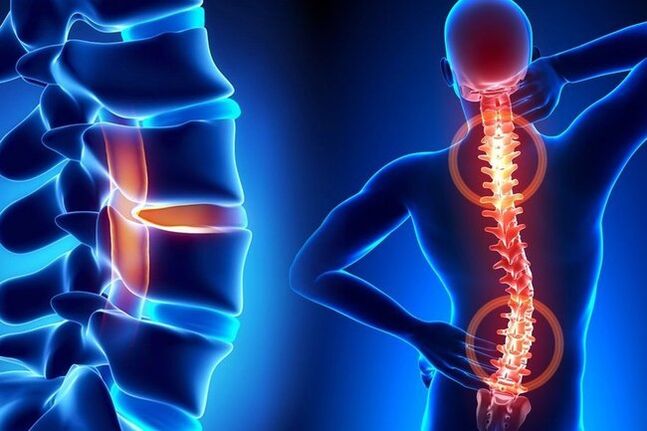Lumbar osteochondrosis is a fairly common disease. However, it is not recommended to continue treatment under any circumstances, as this can have serious consequences, including disability. The older a person is, the more likely they are to develop a disease such as lumbar osteochondrosis.

Unfortunately, older people face this disease in an average of 90% of cases. As for the special risk group, this includes those who do not lead a sufficiently mobile and active lifestyle. And people like that, you see, are in the majority today.
Main causes of lumbar osteochondrosis
When the load on the chin and torso muscles is unevenly distributed, the intervertebral discs become deformed and extend between the vertebrae. This leads to compression of the spinal nerves. The result is the so-called radical syndrome, which is characterized by back pain and a significant decrease in lumbar spine mobility.

The situation where a person’s back becomes lumbar in osteochondrosis of the lumbar spine does not occur suddenly, so experts recommend that you begin to resolve the problem before it becomes critical. So it’s worth testing your body for any problems.
The main symptoms of osteochondrosis are:
- pulling pain in the lumbar region (in the first stage of the disease, the pain is not very strong but increases over time);
- restrictions on mobility in the lumbar region;
- problems walking;
- numbness of the limbs.
Compression of the intervertebral vessels can lead to diseases of the internal organs. This occurs when the disease is severely neglected. If you experience any of the above symptoms, it is strongly recommended that you see a neurologist or therapist immediately. Your doctor will prescribe comprehensive therapy that can effectively prevent the condition from getting worse.
How to deal with an acute attack of osteochondrosis
If your back ever twists in an unexpected way, you need to know what specific steps you need to take to arrive for the rescue team to be challenged. So we are talking about the following manipulations:
- under no circumstances should a person be helped to straighten up, as such activities may not only cause a new seizure of pain, but may also lead to an even greater dislocation of the vertebrae, which is fraught with paralysis;
- if possible, help the person to lie down on the bed or sofa;
- do not touch the sore back area;
- the victim should be given anesthetic medication that reduces pain;
- if the pain syndrome is moderate, the lumbar zone should be treated with an anesthetic ointment.
Characteristics of treatment of lumbar osteochondrosis
The main task that needs to be addressed in the treatment of lumbar osteochondrosis is the elimination of pain. Subsequently, a number of measures need to be taken to restore mobility and eliminate the cause of spinal nerve compression. In principle, the goal of treatment is to fully recover the patient in all cases. In advanced cases, we speak of inducing stable remission by restoring most motor functions.
Treatment can be conservative and immediate. A conservative method of treating lumbar osteochondrosis includes analgesic courses as well as general strengthening and anti-inflammatory therapy. Surgical treatment is performed only in cases where there is a risk of paralysis due to significant displacement of the disc. During the operation, the hernia is removed, the intervertebral discs are replaced, and the bone growths, adhesions and scars on the vertebrae are removed.
In some cases, the use of folk remedies can be quite an effective method. For example, you can make a compress based on herbs. It is also useful to wrap the lumbar area with a scarf or shawl made of natural camel or any other wool.
Characteristics of osteochondrosis rehabilitation
In order to consolidate the results of the treatment performed, the high severity of rehabilitation measures is strongly recommended. It is better to do it during remission in medical and physical training centers that are open in almost every city. Rehabilitation programs are developed for each person individually, selecting the complex individually. It includes all kinds of treatments, including movement therapy, massage and physiotherapy.



















